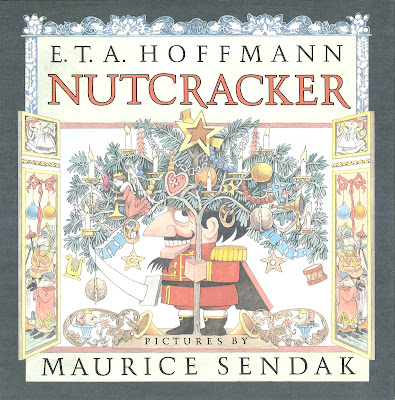The nutcracker is a famed article from the German Erzgebirge (Ore Mountains) area. A fairy tale written between 1776 and 1822 by E.T. Amadeus Hoffman entitled "The Nutcracker and the King of Mice" and the famous Tchaikovsky "Nutcracker Ballet" first performed in 1892 have done much to popularize the nutcracker.
The origin of the first nutcracker is a mixture of legend and history. No one knows when they were first made. Fancifully carved nutcrackers have been known and collected in Europe since medieval times. As early as the year 1725, they were present in Erzgebirge homes.
Nutcrackers are a reflection of dining customs in the past. At one time, nuts were served as part of the dessert course in which guests cracked their own nuts and lingered over wine and sweets. The amusing nutcrackers undoubtedly provided a lighthearted conversation piece. An important source of protein that could be preserved through the winter, nuts were considered a more important foodstuff before the modern age than they now are. Nutcrackers may crack nuts, but their real joy today is their colorful presence in the home.
It is said that someone has a "hard nut to crack" if one faces a difficult problem. Nutcrackers have unusual faces, and many depict officials or authority figures who work for the people to "crack nuts." Even folk sayings reflect the nut's significance. "The harder the nut, the sweeter the kernel," or "Nuts are given to us by life, but we have to open them ourselves." As the Germans used to say when faced with a difficult problem, "I will discuss it with my nutcracker!"
Germany, a country of rich woodlands, has long been a major center of woodworking and nutcracker production. The Steinbach factory in Hohenhamein is a leading manufacturer and has been turning out wood products of various kinds for generations. The Steinbach family claim that their nutcrackers bring good fortune and have even devised their own guidelines to nutcracker collecting: "The first and most important piece in a nutcracker collection is the king. He is the ruler of the collection, so he needs to be displayed so that he overlooks his subjects. The number two piece is the soldier or guard with a weapon. He is there to protect the king. The third nutcracker for any collection should be the good luck piece, and in Europe the chimney sweep is the symbol of good luck. The fourth in line of importance is the drummer or musician. This nutcracker is the one who drums out the good news about the collection. The king need to eat, have clothes and shoes, so bakers, servants and workers finish out the basic collection."
The Erzgebirge mountain region of Saxony remains a prominent area for cottage-industry nutcracker-making. The Ulbricht factory of Seiffen is located in this region. As many as 130 separate procedures are required to make a fine quality nutcracker. Some nutcrackers are handcarved, but most are produced on the lathe, as in times past. The wood is carefully selected, cured, dried, machined, assembled and finally painted. Nutcrackers are much sought after as collectors pieces. Because there is a great deal of handwork and skill involved, only limited quantities can be crafted. Nutcrackers are also produced in Far Eastern countries and in the USA.
German author Dr. Heinrich Hoffman, widely know for his children's books, penned the following verse in 1851:
King Nutcracker that's my name.I crack hard nuts and eat the sweet insides,But the shells, ugh - I throw to others,Because I am the King!
This information was obtained from a leaflet I picked up while visiting Bronner's Christmas Wonderland (the world's largest Christmas store) in Frankenmuth, Michigan.
Bronner's carries a wide selection of nutcrackers year-round.
Happy Christmas Eve!!!






No comments:
Post a Comment
Your comments are welcome and appreciated. Blessed Be.